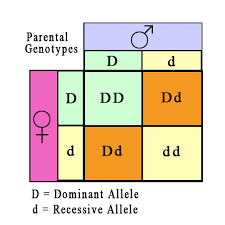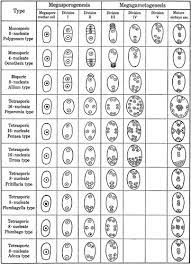GARDEN IMPLEMENTS
GARDEN
IMPLEMENTS
Pick axe:
pickle axe is a ‘T’ shaped hand tool used for prying. Its head is typically metal, attached perpendicular to a longer handle. It is used for breaking up rocks or ground, in construction and mining, prying the axe of hoeing, skimming and chopping through roots.
Axe:
axe is an implement that has been used for shape, split and cut wood. It has two primary components: the head and the haft. It is used for chopping, splitting, chipping, piercing, to harvest timber, weapon, ceremonial or heraldic symbol.
Shovel:
shovel is a hand tool consist of a broad blade fixed to a medium- length handle. It is used for digging, lifting, moving bulk materials.
Trowel:
a trowel is a small hand tool. The varieties include masonry towel, garden trowel, float trowel. It is used for digging, applying, smoothing, planting, weeding, mixing in fertilizer and transferring plants to pots.
Garden fork:
it is a square- shouldered head featuring several short, sturdy tines. It has shorter, flatter, thicker and more closely spaced thin tines than pithforks.it is used for loosening, lifting, turning over soil in gardening, farming, to rake out stones and weeds and break up clods.
Crow bar:
it is a single metal bar with a single curved end flattened points, with a small fissure on one or both ends and is usually hook shaped.it is used for removing nails, prying apart boards, breaking things.
Head pan:
it is a multi-purpose implement of farm tool used in the farm for the collection of harvested crops. It is made of iron, steel. It is around container in farming.
Hose:
a garden hose is a flexible tube with sprayer and sprinkler.it is usually attached to a hose spigot or tap. It is used to convey water and transport water for gardening, lawn care.
Khurpi:
it is short handle cutting tool with a flat blade, usually made of cast iron with a wooden handle attached to one side. It is used to cut branches of trees, lifting of seedlings, digging soil, weeding in small farms.
Bill hook:
it is a hook – shaped implement having single or double cutting edges, it consist of a curved blade attached with a plastic or wooden handle.it is used for cutting shrubs and lopping old or dead branches of a tree and to carry out heavy pruning operations.
Sickle:
a sickle is a single – handed agriculture tool designed with variously curved blades. It is used for harvesting, reaping, cutting of succulent forage.
Lawn mower:
lawn mower consist of discs or blades which are made of high carbon steel and discs are mounted in spiral fashion on a centre shaft. It is used for chopping, trimming, mowing grass in lawn and fields patches.
Secateurs:
Secateurs are considered as the most important tool for a propagator or nurseryman. It is used for removing scions, lopping off the rootstock, preparation of scion sticks, removal of undesirable shoots/sprouts. In training and pruning operations. Blades of secateurs should be high quality carbon blade for giving smooth cuts to the stock and scions.
Pneumatic secateurs:
The pneumatic secateurs, also known as pneumatic pruning shears. These are used for pruning vines using pneumatic power. Gripping blade of the shear is stationary and shearing action is imparted by the other blade through the movement of piston. The device offers effortless, accurate and swift cutting, at the same time ensuring the quality of vines. The double acting piston facilitates easy pruning of even large branches.
Pruning knife:
It is useful for thinning delicate branches ,removing suckers , shaping rose bushes.
Pruning saw:
These have sharp blades so that we cut large branches easily.
Budding knife:
The budding knife is an important hand tool of a gardener.
One of the edges is sharpened all along its length. The blunt or the other edge
is sharpened on the tip and is slightly curved. This sharpened curved portion
is used to create a 'T' opening or slot on the bark of the mother branch or
twig for the insertion of the bud.
The budding knife is
used for the
1. budding operation,
2. cutting of scion
stick,
3.defoliation of leaves and removing or cutting of unwanted twigs.
Grafting knife:
which resembles a household knife. The cutting edge of the blade is sharpened all along its length and the other edge is blunt. The blade of the knife can be folded into the handle when not in use. For cutting and defoliation of scion stick. Making of chisel point and 'V' grooves for grafting. Slashing of thin twigs and for general-purpose cutting.
Grafting/budding knives:
Knife having a combined blade for grafting and budding purposes . A grafting knife has a straight 7.5cm long blade and strong long handle It has a spatula at the end of a handle , which is used for lifting the bark during budding operations In some knives have 2 parallel double blades , used specially for lifting or removing the patch of a bud from the bud wood. The blade of the knife should be made from high carbon steel and it should be sharp. Generally these knives have either a folding or fixed blade.
Spray pumps:
To spray protective material that is insecticide/pesticide/fungicide to eliminate pathogen or insects. Commonly used sprays are knapsack sprayer ,rocker sprayer , hand sprayer or power sprayers. Depending upon the volume of the nursery and specific purposes different types of sprayers are used.
Pruning shear:
It is made up of iron fitted with wooden handle. It is used to prune unwanted branches. Collection of scion. Trimming of the edges and hedges and topiary works .
Pots:
Pots of different shapes and sizes are used in nursery. They may be of clay,metal or plastic usually 10cm ,15cm, 20cm for a single specimen. These are use for potting ornamental , fruit plants and samplings.
Grafting wax:
Wax is used by propagator to seal the graft union for preventing moisture loss and desiccation of cells at cut surface. It also prevents the decay of wood by checking the entry of pathogens. Types of waxes are cold and hot wax.
Wheel barrow:
It is manually operated small trolly , used for carrying nursery plants , compost ,fertilizer , leaf litter etc. From one place to another place. It can be designed into different shapes according to requirements.
Weeding fork:
It loosens the soil and helps in weeding also . It consists of a long handle with a blade of handle teeth. It drawn manually with the help of the handle to collect the weeds.
Handle hoe and rake:
It is a rectangular shape metal blade with fork like fore edge. It is used for digging ,hoeing,earthing ,levelling and collecting weeds.
Spade:
It is used for lifting and turning the soil. It is used for digging the pit , preparing channels for irrigation and drainage lines.
Labels:
It is use for labelling of plants before sale. Labels may be made of papers ,cardboard , wooden, aluminium and plastic etc.
Rose can:
It is a tubular pipe with rose i.e, fitted into the can through which water is sprinkled over the nursery beds until the germination of seeds. It avoids splashing of seeds from the nursery bed due to loose pipe irrigation and flood irrigation.
































Comments